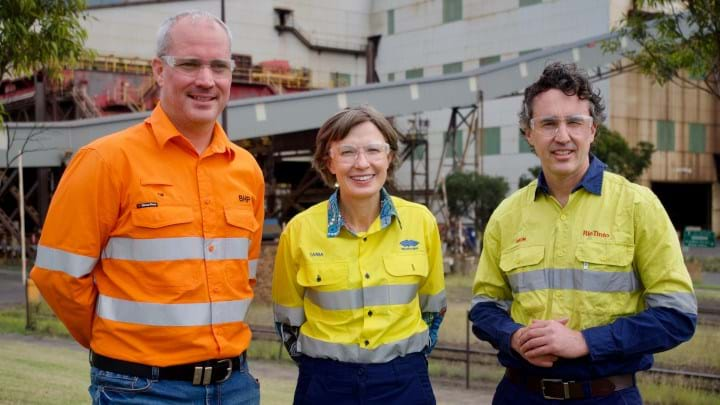BHP, Rio Tinto, and BlueScope partner to decarbonise Australian steelmaking with electric melter pilot

AUSTRALIAN iron ore majors BHP and Rio Tinto have partnered with a leading steelmaker in the country, BlueScope, to investigate the development of an ironmaking electric smelting furnace (ESF) pilot plant.
Simon Trott, chief executive of Rio Tinto, said: “The carbon intensity of iron and steelmaking requires profound change to meet the needs of our planet and our climate objectives. We must find better ways to enable these materials to be made more sustainably through leveraging technology.”
The collaborators aim to demonstrate the feasibility of producing molten iron using renewable power coupled with direct reduced iron (DRI) technology. DRI chemically removes oxygen from iron ore without melting the material – as in a blast furnace – by using carbon monoxide or hydrogen as a reducing agent.
The reduced iron is then transferred to an ESF, a continuous iron-making unit that produces liquid iron for use in established basic oxygen steelmaking technology, which uses oxygen to make steel from molten iron. ESFs have the potential to reduce emissions from primary steelmaking compared with conventional coal-based blast furnace production. The partners will combine their work to date, benefiting from BHP and Rio Tinto’s deep knowledge of Pilbara iron ores and BlueScope’s 50 years of experience with electric smelting.
The partners will combine their work to date, benefiting from BHP and Rio Tinto’s deep knowledge of Pilbara iron ores and BlueScope’s 50 years of experience with electric smelting.
If the partnership is successful, it could open a pathway for steelmakers relying on Australian ore, allowing them to achieve operations with near-zero greenhouse gas emissions intensity.
Tim Day, asset president for Western Australia Iron Ore at BHP, said: “Technology pathways compatible with renewable energy and scalable to the order of hundreds of millions of tonnes of steel production would be a major step forward in setting up Pilbara ores, and the world, for a low greenhouse gas emission future.”
The joint investigation could also lead to the development and potential investment in a pilot plant. Under the agreement, the partners will assess several locations in Australia for the proposed facility, considering factors such as supporting infrastructure, available workforce, access to target industry and supply chain partners, and suitability for operational trials.
The partners expect the pre-feasibility study work to conclude at year-end. If approved, the pilot facility could be commissioned in 2027.
Correction: This article was corrected on 21 February to say ESFs produce molten iron. It originally said molten ore.
Recent Editions
Catch up on the latest news, views and jobs from The Chemical Engineer. Below are the four latest issues. View a wider selection of the archive from within the Magazine section of this site.




